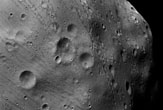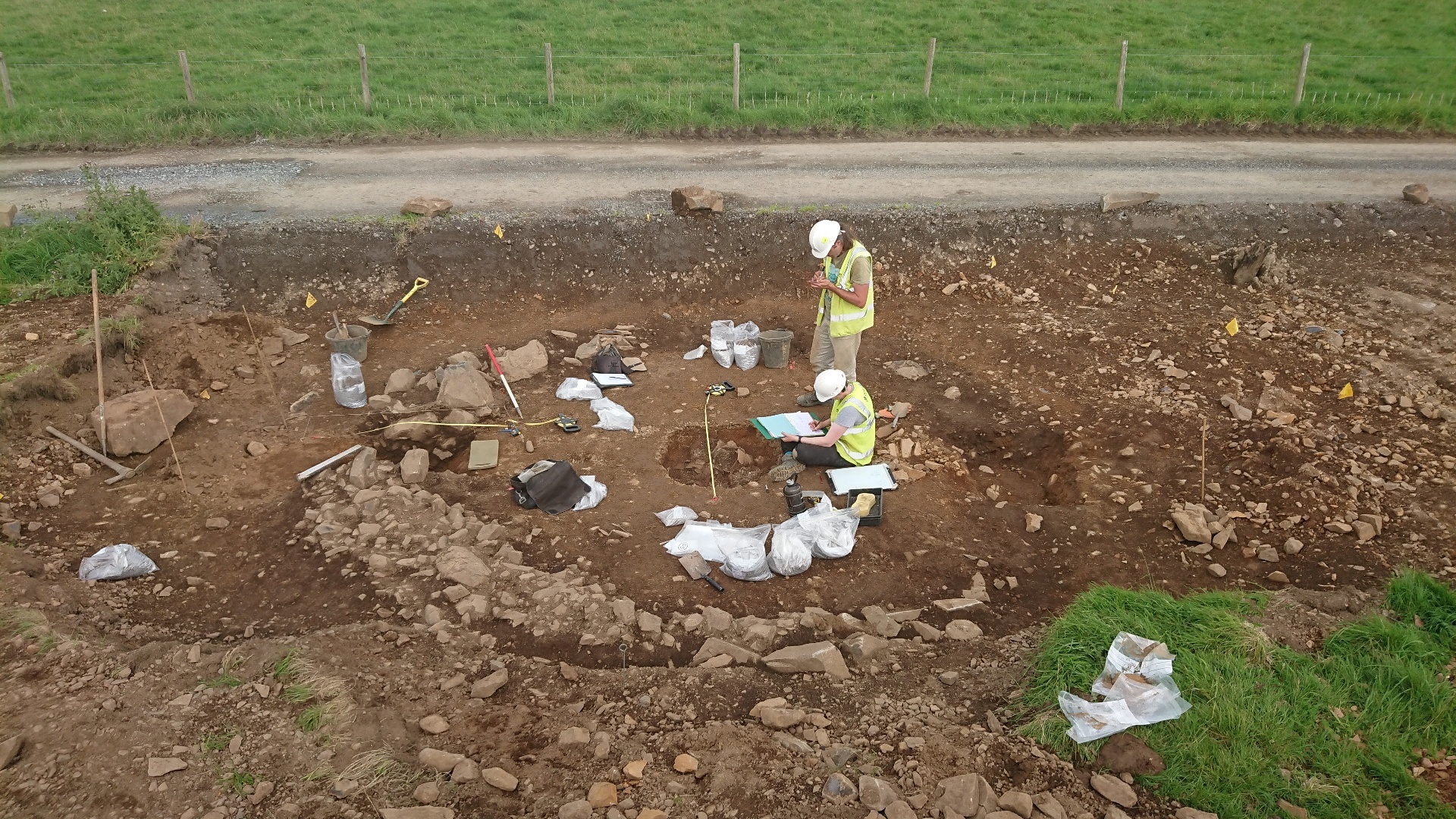Mars Moon Phobos Likely Forged by Catastrophic Blast

One of the two moons of Mars most likely formed from rubble catapulted into space after a comet or meteorite slammed into the Red Planet, a new study finds.
The moon,Phobos, looks a lot like an asteroid: It's lumpy, potato-shaped and very small. It has an average radius of just 11 kilometers (6.8 miles).
Scientists have long wondered about the origin of Phobos — is it merely a captured asteroid, the leftovers from Mars' formation or evidence of a cosmic Martian hit-and-run with another object?
The new study found that the moon's composition and density strongly indicate that, like the leading theory for Earth's own moon, Phobos is the result of a catastrophic impact with its parent planet.
Phobos is one of two moons of Mars. The other, Deimos, is smaller than its partner.
What makes a Phobos?
Researchers used data from the European Space Agency's Mars Express spacecraft to study Phobos' composition.
Get the world’s most fascinating discoveries delivered straight to your inbox.
By analyzing the probe's infrared observations, astronomers found that Phobos and asteroids don't seem to be made of the same stuff. Instead, the moon has many minerals also seen on Mars, suggesting a common origin for the two bodies.
The team also found so-called phyllosilicates — minerals that can form in the presence of water — on Phobos. Phyllosilicates have been detected on Mars, too. "This is very intriguing as it implies the interaction of silicate materials with liquid water on the parent body prior to incorporation into Phobos," said study co-author Marco Giuranna of the Istituto Nazionale di Astrofisica in Rome, Italy. "Alternatively, phyllosilicates may have formed in situ, but this would mean that Phobos required sufficient internal heating to enable liquid water to remain stable."
Independent observations from NASA's Mars Global Surveyor spacecraft support the composition data from Mars Express, the researchers said.
The research was presented Sept. 20 at the European Planetary Science Congress in Rome, Italy, and has been submitted to the journal Planetary and Space Science.
Too spongy for an asteroid
During the study, evidence piled up to rule out the captured-asteroid scenario for Phobos, researchers said.
The first sign came while they were studying the Martian moon's density to see how it matched with that of asteroids. They determined the density of Phobos to be about 1.86 grams per cubic centimeter.
"This number is significantly lower than the density of meteoritic material associated with asteroids," said Pascal Rosenblatt of the Royal Observatory of Belgium. "It implies a sponge-like structure with voids making up 25 to 45 percent of Phobos' interior."
Other evidence points toward a relatively spongy Phobos, too.
If it were denser, the moon probably wouldn't have survived the massive impact that created its Stickney Crater, Giuranna said. Stickney is about 10 km (6 miles) across — nearly half as wide as all of Phobos.
In addition, the researchers said, a highly porous asteroid — if that's what Phobos once was — probably would not have survived being captured by Mars' gravity.
Yet sponginess is consistent with the impact-formation hypothesis for Phobos, they added. Chunks of rock and rubble blown off Mars' surface would accrete somewhat haphazardly in its orbit, leaving interior pockets and voids.
Finally, the motion of both Phobos and its sister moon Deimos — which is also small, rocky and lumpy—argue against the asteroid-capture scenario, according to the researchers. Their orbits are too neat — too circular and too close to the Martian equator — for a couple of snagged space rocks, researchers said.
More missions, more data
Despite the evidence from Mars Express, more observations are still needed before scientists can conclusively determine the origin of Phobos, the researchers said.
The Russian Phobos-Grunt mission, set to launch in 2011, could help settle the question. Phobos-Grunt aims to land on Phobos, grab soil samples ("Grunt" being the Russian word for "soil") and return with them to Earth. Such samples could be compared to Martian meteorites that have landed on Earth.
Similar studies of lunar soil samples have shown that Earth and our moon are likely made of the same stuff. T>his determination helped scientists come up with the leading theory of our moon's formation: A long-ago catastrophic impact.



